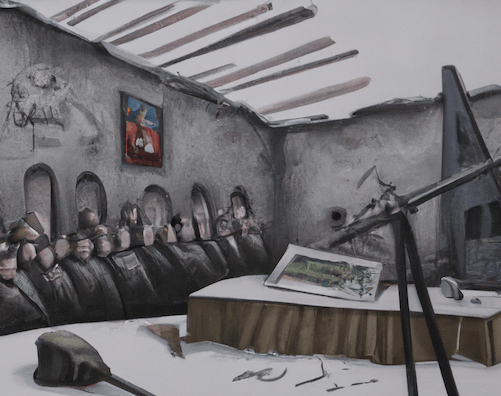The classic story of “The Wizard of Oz” has captured the hearts and imaginations of audiences for over a century. However, beyond its fantastical plot and memorable characters, the tale also contains a deeper, allegorical meaning that reflects the creation of the Federal Reserve System.
Federal Reserve Metaphors in “The Wizard of Oz”

Published in 1900, L. Frank Baum’s story was written during a time when the United States was experiencing significant economic turbulence. The country was facing a financial crisis, with banks failing left and right and the economy in shambles. It was against this backdrop that the Federal Reserve System was created in 1913, with the aim of stabilizing the economy and preventing such financial crises from occurring in the future.
The characters and events in “The Wizard of Oz” can be interpreted as metaphors for the challenges faced by the United States during this period of economic instability, and the eventual solution in the form of the Federal Reserve. For example, the Yellow Brick Road can be seen as a symbol for the gold standard, while the Emerald City represents Washington D.C. and the political power that resides there. The Wizard himself can be interpreted as representing the Federal Reserve, which was seen as a powerful and mysterious institution that could stabilize the economy and bring order to the land.
Furthermore, the characters of the Scarecrow, Tin Man, and Cowardly Lion can be interpreted as representing farmers, industrial workers, and bankers, respectively. These characters journey together to the Emerald City in search of help from the Wizard, just as various groups in American society sought solutions from the government during the economic crisis.
“The Wizard of Oz” is not just a whimsical tale about a young girl and her adventures in a magical land. It is a thought-provoking allegory that reflects the economic challenges faced by the United States at the turn of the 20th century, and the eventual solution in the form of the Federal Reserve System.
Examples from “The Wizard of Oz”
- The Yellow Brick Road: The Yellow Brick Road represents the gold standard, which was the monetary system in place before the creation of the Federal Reserve. The gold standard tied the value of money to the amount of gold held by the government, and the Yellow Brick Road symbolizes the path to the Emerald City, which represents the destination of economic stability and prosperity.
- The Wicked Witch of the East: The Wicked Witch of the East represents the financial crisis that led to the creation of the Federal Reserve. In the story, her death marks the end of a period of chaos and uncertainty, just as the creation of the Federal Reserve was intended to bring stability and order to the financial system.
- The Scarecrow: The Scarecrow represents the farmers and rural communities that were struggling financially in the late 19th and early 20th centuries. The character’s search for a brain symbolizes the need for financial education and literacy, which was a key goal of the Federal Reserve.
- The Tin Man: The Tin Man represents the industrial workers who were also struggling financially during this time period. The character’s search for a heart symbolizes the need for compassion and fairness in the financial system, which the Federal Reserve was designed to provide.
- The Wizard of Oz: The Wizard of Oz represents the government and its role in the financial system. The character is initially seen as all-powerful and all-knowing, but is ultimately revealed to be a fraud who relies on smoke and mirrors to maintain his image. This mirrors the skepticism that many people had towards the government’s ability to solve financial problems, and the belief that a more independent and accountable institution was needed, like the Federal Reserve.
Check out our Novel Writing Workbooks
Check out Little Tree Food Forest for articles on food forests and homesteading.
Check out FoodieScapes for articles on growing, fermenting and preserving food.
Subscribe to our newsletter to get information delivered to your inbox on how to write a book, outlining your novel, keeping journals, marketing your novel, self-publishing, writing poetry and more.










